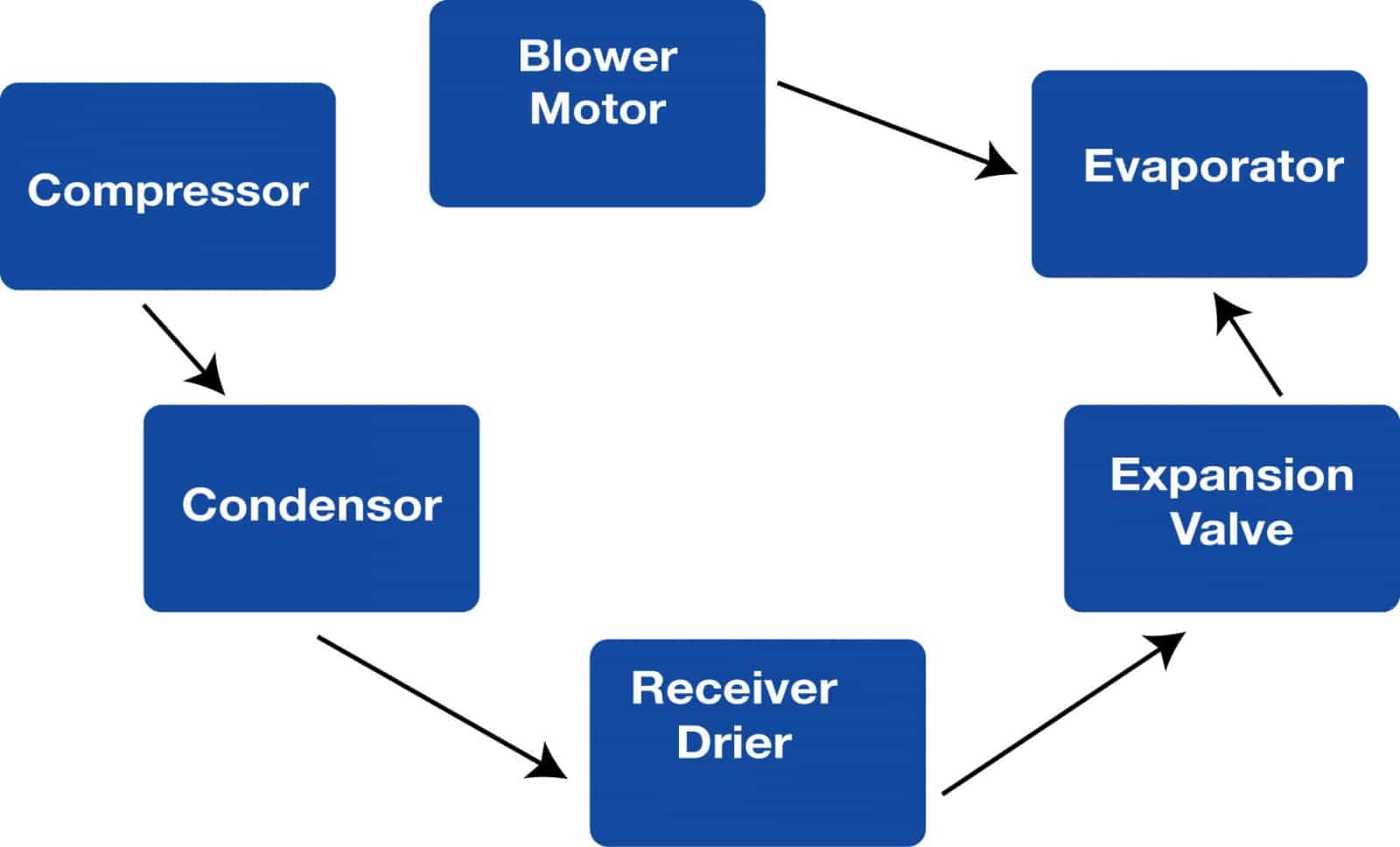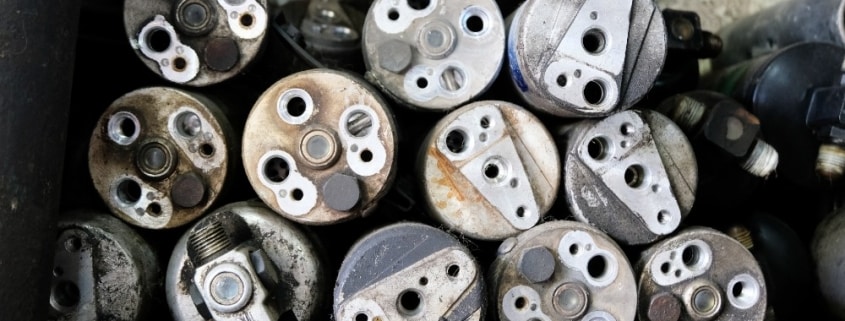5 Clear Signs of a Failing AC Receiver Drier and How to Replace It
Your car’s AC system keeps you cool and comfortable, but when a key component like the receiver drier isn’t working properly, it can disrupt the entire system. An AC receiver drier plays a crucial role in maintaining your air conditioner’s efficiency, and recognising the signs of trouble early can save you from bigger issues down the line. Today, we’ll go through five common symptoms of a bad AC receiver drier to look out for.
Struggling with your AC receiver drier? Natrad has a cost-effective compressor kit that is perfect for receiver drier replacement and repairs. Backed by a 3-year warranty and professional installation, Natrad’s got you covered for all repairs to your car’s cooling systems.
What is an AC receiver drier?
A receiver drier is a tin-like capsule with an inlet and outlet, usually found in air conditioning systems with an expansion valve. It’s easy to dismiss something so small as inconsequential, but the receiver drier is actually a crucial part of the system.
The general function of the component is to help absorb moisture in the air conditioning system, among other responsibilities. First and foremost, it prevents a buildup of moisture, which can lead to other parts malfunctioning and complete failure.
That means a pretty hefty repair bill. We don’t want you to suffer the cost and downtime, so we’ll outline signs and symptoms for you to look out for.
How does the receiver drier work?
To put it simply, the receiver drier is a vital part of the AC system in any vehicle, responsible for keeping things running smoothly by managing refrigerant and maintaining system health. Here’s how it works:
- Moisture removal: The receiver drier removes moisture from the AC system to prevent rust, corrosion, and blockages that can damage components.
- Refrigerant management: It stores excess refrigerant during periods of low demand, ensuring the system operates efficiently without pressure imbalances.
- Filtration: Acting as a filter, it captures debris and particles, keeping them from entering the system and causing damage to sensitive components.
- System lubrication: By maintaining the purity of the refrigerant, the receiver drier ensures proper lubrication, reducing wear on critical parts.

A well-functioning receiver drier is essential for:
- Preventing circuit clogs and abnormal system pressures
- Avoiding corrosion and buildup in the AC system
- Ensuring optimal AC performance and longevity
When the receiver drier fails, you may experience poor cooling performance, unusual system pressures, or even damage to other parts of the AC system. Regular maintenance and timely replacement can help you avoid these costly issues and keep your car’s AC system in top condition.
How to Identify Bad AC Receiver Drier Symptoms
Given how critical the receiver drier is to your air conditioning system, it’s important to know how to pick up on any problems that arise throughout the life of your car. The consequences can be pretty dire if you miss these telltale signs, and depending on the severity of the problem, you’ll probably end up replacing more than just the receiver drier.
So what are some of the signs of a faulty receiver drier?
- Unusual noises
- Leakage
- Bad odour
- Ineffective cooling
- Cloudy sight glass
Some of these might sound pretty vague — we’ll get into that later — but first, we want you to get informed about the true function of the receiver drier, and what it does for your car.
5 signs and symptoms of receiver drier failure
As we mentioned, this is what you’re going to want to watch out for:
- Leakage is far more likely in a valve-based system. It’s rare in the drier itself, but a puddle is common from condensation from the evaporator and normal when using AC on humid days.
- If it’s something other than just water (condensation from the evaporator. Leakage can result in overheating, corrosion and insufficient lubrication.
- Abnormal noises due to incorrect installation, internal damage or loose or damaged fittings.
- Ineffective cabin cooling, thanks to clogging, contamination or full-blown failure. Not enough refrigerant due to leakage is also likely to affect this.
- A cloudy sight glass, which might be a little difficult to see. Due to contaminated desiccant resulting in altered pressure, the outlet fitting will become abnormally cold and look cloudy.
When to replace an AC receiver drier?
An AC receiver drier should be replaced whenever the AC system is opened for repairs, such as replacing the compressor, condenser, or other components. Over time, the drier’s desiccant material can degrade, reducing its ability to remove moisture and debris from the system. Symptoms, like reduced cooling performance, unusual noises, or inconsistent airflow, may also indicate when to replace an AC receiver drier. Regular maintenance ensures your AC system operates efficiently and prevents damage to other components.
Get your bad AC receiver drier replaced at Natrad
When it’s time to replace your AC receiver drier, it’s often part of a larger repair. Due to warranty regulations, the compressor is usually replaced alongside the receiver drier, and in severe cases, the condenser or evaporator may need attention as well. These interconnected components require expert care to ensure your AC system operates efficiently and reliably.
Not sure what the best solution is for your car? The friendly team at Natrad is here to help. With highly trained technicians across Australia, we specialise in AC and cooling system repairs, including receiver drier replacements.
Drop into your nearest Natrad store for expert advice and quality service. Let us diagnose your cooling system, recommend the best solution, and get your car back to delivering cool, refreshing air when you need it most. Contact Natrad today to keep your car running cool and comfortable!









